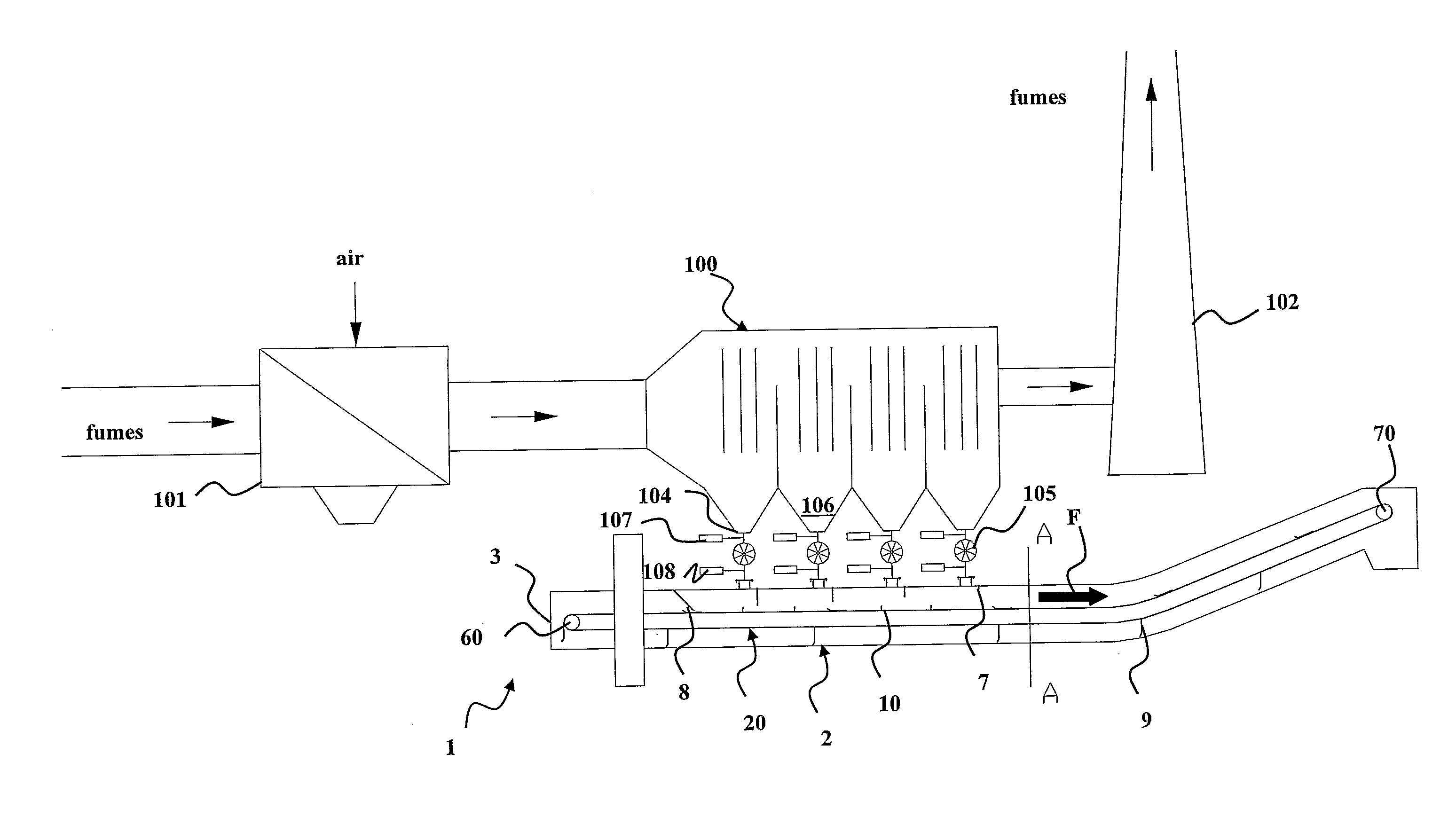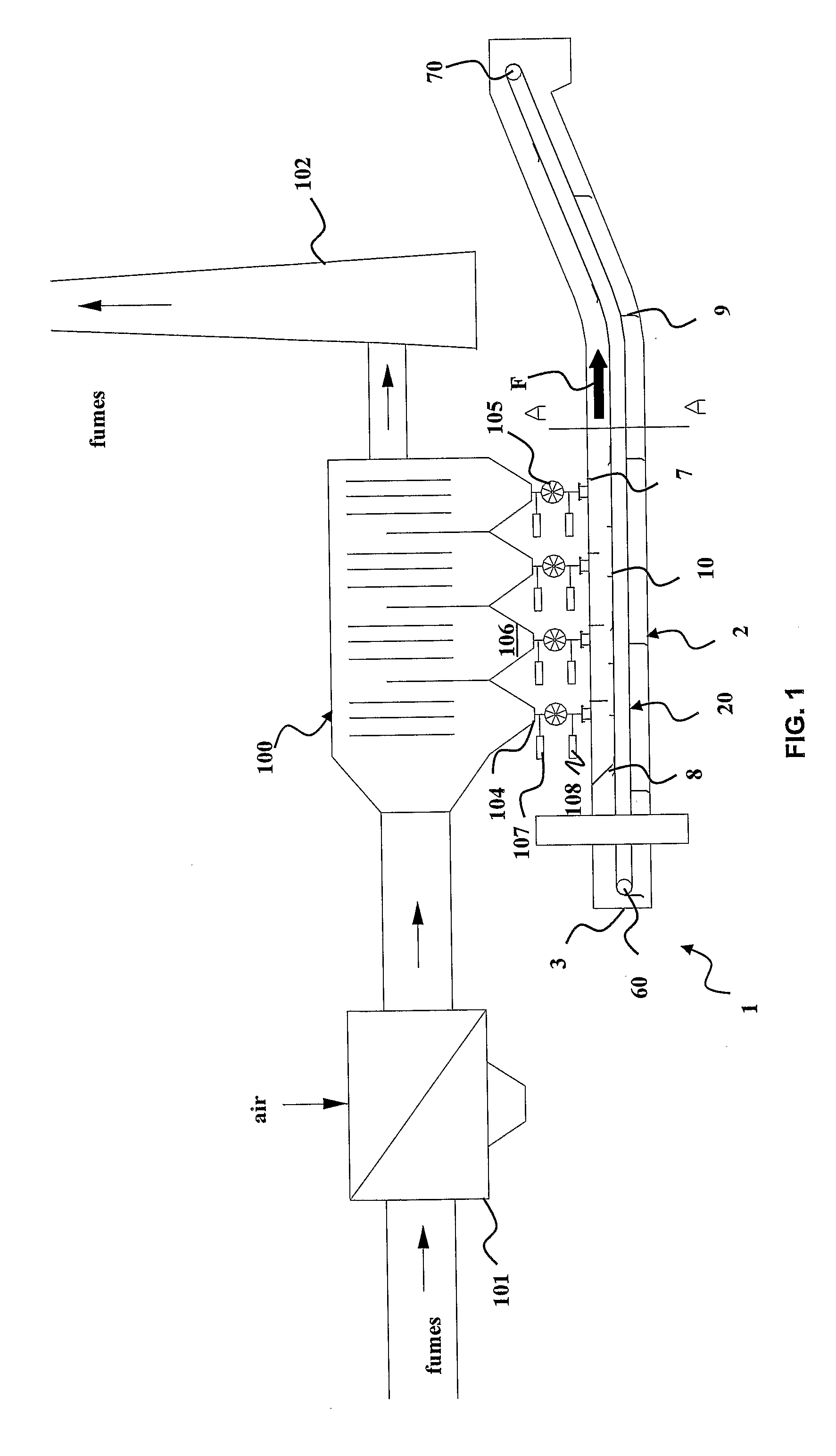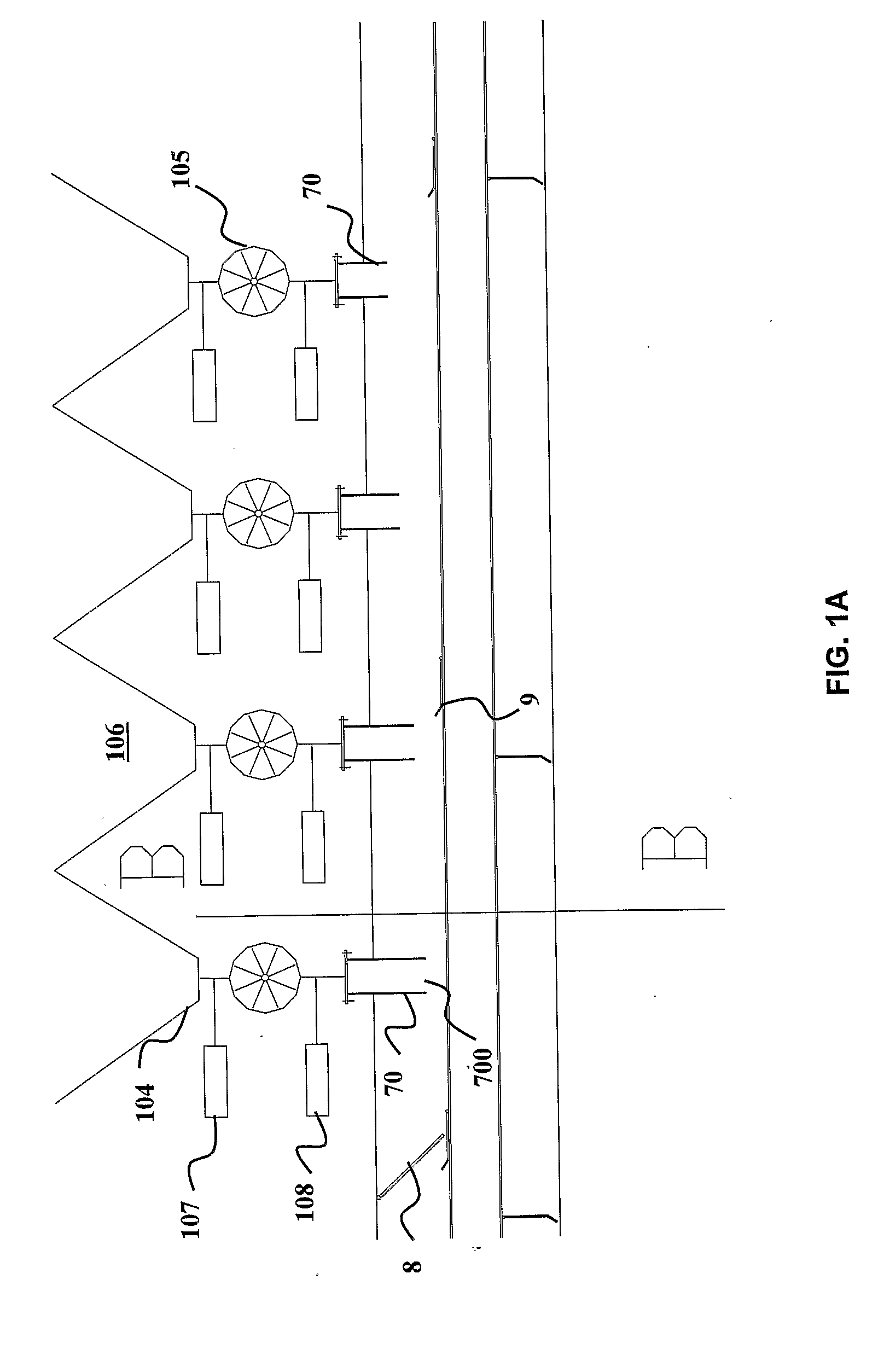System for extraction and transport of light ashes by means of a steel belt conveyor
a belt conveyor and light ash technology, applied in transportation and packaging, combustion process, lighting and heating apparatus, etc., can solve the problems of minuscule droplets, fly ashes, extreme abrasives, etc., and achieve the effect of avoiding energy expenditure and system complexities associated with the use of known-art pneumatic transport systems
- Summary
- Abstract
- Description
- Claims
- Application Information
AI Technical Summary
Benefits of technology
Problems solved by technology
Method used
Image
Examples
Embodiment Construction
[0032]Referring initially to FIG. 1, an apparatus for dry transport of fly (light) ashes produced inside solid fuel boilers according to a preferred embodiment of the invention is generally denoted by 1.
[0033]The apparatus 1 is associated to a system for dedusting combustion fumes generated inside said boiler, generally denoted by 100, which in the present example is of the type employing an electrostatic principle for the separation of fly ashes from the fumes themselves.
[0034]In FIG. 1, apparatus 1 and system 100 are depicted as inserted in a typical context of an installation envisaging an air / fume exchanger 101 and a fumes exhaust stack 102, arranged respectively upstream and downstream of the fumes separation system 100.
[0035]The apparatus 1 comprises first of all a metal belt 20 type conveyor 2, in particular made of steel. The belt 20 is apt to convey the fly ashes extracted from the fume dedusting system 100 to a storage, treatment and / or disposal site, and is enclosed in a ...
PUM
 Login to View More
Login to View More Abstract
Description
Claims
Application Information
 Login to View More
Login to View More - R&D
- Intellectual Property
- Life Sciences
- Materials
- Tech Scout
- Unparalleled Data Quality
- Higher Quality Content
- 60% Fewer Hallucinations
Browse by: Latest US Patents, China's latest patents, Technical Efficacy Thesaurus, Application Domain, Technology Topic, Popular Technical Reports.
© 2025 PatSnap. All rights reserved.Legal|Privacy policy|Modern Slavery Act Transparency Statement|Sitemap|About US| Contact US: help@patsnap.com



